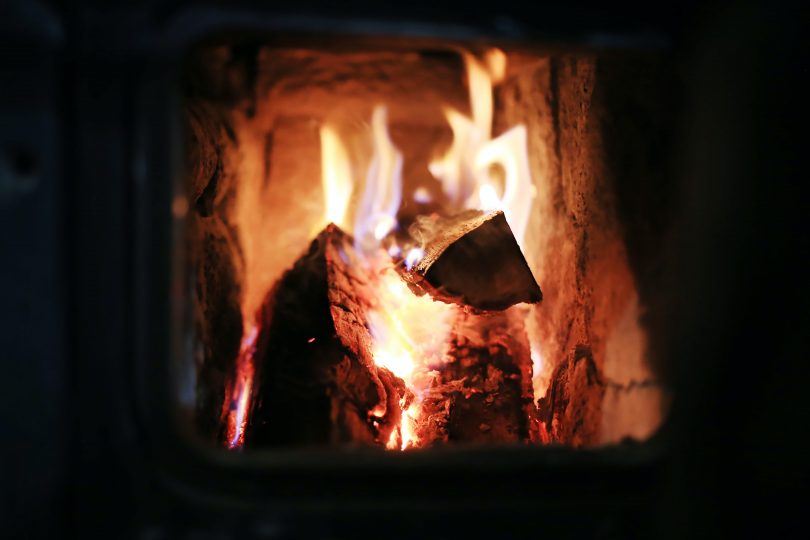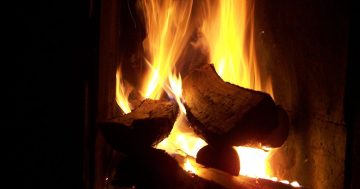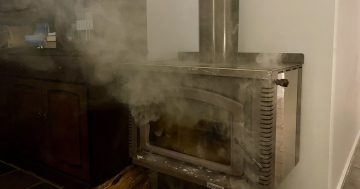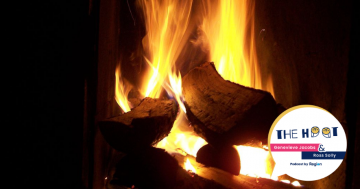
“Modern wood heaters are a highly efficient form of heating,” says Peter Dimmock from Rural Firewood Supplies in Fyshwick. Photo: Ergyn Meshekran.
Despite the ACT Government’s best efforts to turn people away from wood heaters, demand for them is still roaring.
Sellers of wood heaters report sales in 2021 have gone through the roof. Despite rumours of a national timber shortage, firewood suppliers are out-of-control busy, too.
Patrick Carey, managing director of Burning Log, says his sales staff have been swamped this season with Canberrans wanting new heaters, although the demand isn’t limited to wood heaters.
“It’s across our whole range: wood, gas, ethanol and electric,” he says.
Patrick suspects the surge in demand is due to COVID-19 and the increased number of people working from home this winter.
“This does lean more towards wood heating because it is ideal for 24/7 use,” he says. “In fact, when people ask about where they should put a wood heater in their house, we always say, ‘Somewhere you’re doing a lot of sitting around.'”
Since 2004, the ACT has run the Wood Heater Replacement Program (WHRP). This offers financial incentives for replacing wood heaters with electric options: $250 for the removal of a wood heater, and up to $1250 for its removal and replacement with a ducted heating system.
It is also illegal to install a wood heater in the suburbs of Molonglo Valley, with the exception of Wright.
Patrick says it’s rare but “a couple of times a year, we might hear of someone who has taken the government rebate and then wanted a fireplace back.”
“People buy a wood heater for many different reasons,” he says.
“The ratio is probably 50-50 between those who use it for purely functional home heating and those who have it for decoration and occasional use. Some even want one as a back-up heating system in case electricity or gas supplies go down for whatever reason.”
Meanwhile, gas prices in the ACT are already the highest in Australia as the ACT Government commits to its plan to phase it out completely by 2045.
According to the latest annual State of the Energy Market report, electricity retail prices are also set to rise by four per cent in 2022-2023, also the most out of any Australian state or territory.
The unintended consequence is that many people are turning to the time-tested method of burning wood to keep warm.
“Certainly the perception we hear from people walking through our door is that electricity and gas bills are going through the roof,” says Patrick.
Peter Dimmock from Rural Firewood Supplies in Fyshwick is run off his feet with demand for firewood.
He says the cost of firewood has been increasing each year due to inflation, and it now sits at $390 per tonne.
“Modern wood heaters are a highly efficient and radiant form of heating,” he says. “Use them properly by only burning seasoned wood and not restricting the airflow too early, and you get bugger-all smoke.
“What we’re doing is carbon-neutral. People think we chop down living trees – we don’t. Contractors go into farms and take trees that have been dead for at least 10 years, or what’s called ‘seasoned wood’.
“The farmers would burn these anyway. All we’re doing is moving this burning to another place and making it useful.”
Peter adds there’s enough wood for decades of burning, but Sydney’s COVID-19 lockdown is causing transport issues.
“All of our wood comes from Queensland because the trees there are more dense and make better firewood,” he says. “Getting it back via Sydney is proving very difficult.”
Patrick adds that a timber shortage is not something he has experienced, although “some of the sales team said they have had a few questions about firewood supply in the past week”.

















